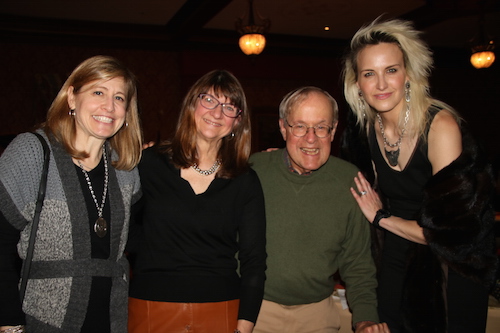ML Perlman Sings "Come Together" at Scarsdale Forum Winterfest
- Details
- Written by Joanne Wallenstein
- Hits: 5760
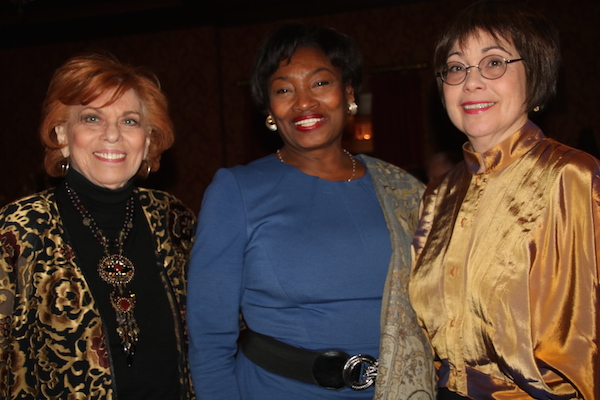
We thank local vendors Blair Interiors Group,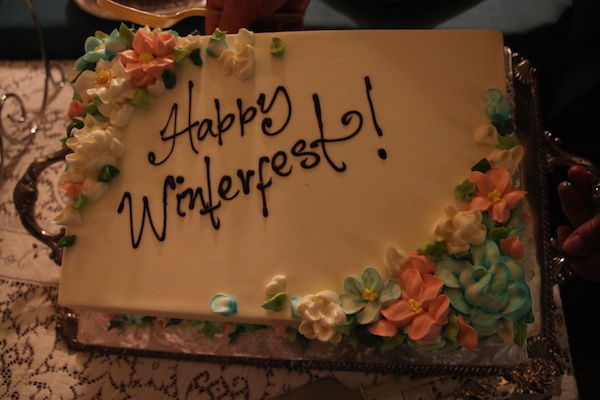
The Scarsdale Forum is a 113 year old civic organization dedicated to improving life in Scarsdale through its educational programs and activities. The Forum offers programs of interest to our community, engages in studies of the issues affecting Scarsdale and sponsors public events such as the Sunday Speaker Series. This year's Winterfest 2017 was a zero waste event thanks to the efforts of the Forum's Sustainability Committee. All Scarsdale residents are welcome to join! See: www.scarsdaleforum.com.
A special thanks to Scarsdale10583 for its assistance in 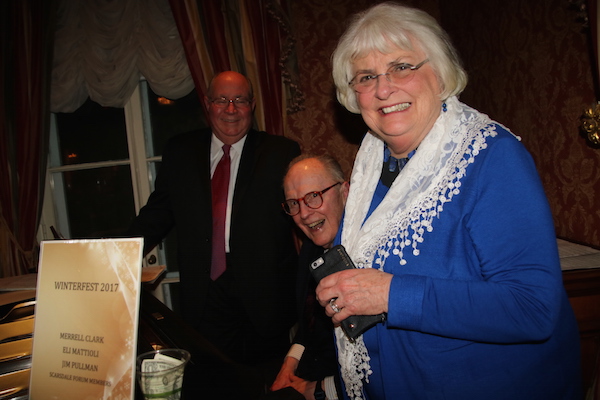
Sincerely,
Winterfest 2017
Special Events Committee
Scarsdale Forum
Photo Credit: Lisa Van Gundy
Howard Rodstein Looks Back on 29 Years at Scarsdale High School
- Details
- Written by Josie Blatt
- Hits: 7248
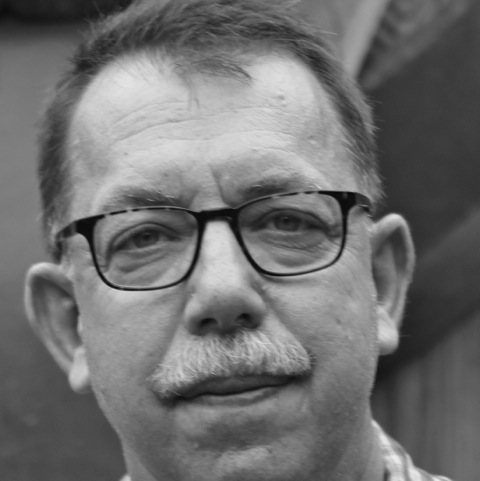 After 19 years at the Scarsdale Alternative School (A-School), and 29 years at Scarsdale High School, Howard Rodstein will be retiring at the end of the 2016-2017 school year. Howard began teaching English at SHS in 1978. He was the founding Civ-Ed English teacher when that program began in 1981, and was the first director of the senior options program in the High School, a program that began in 1993. Howard loves that he was involved in the creation of these two programs that are still successful today.
After 19 years at the Scarsdale Alternative School (A-School), and 29 years at Scarsdale High School, Howard Rodstein will be retiring at the end of the 2016-2017 school year. Howard began teaching English at SHS in 1978. He was the founding Civ-Ed English teacher when that program began in 1981, and was the first director of the senior options program in the High School, a program that began in 1993. Howard loves that he was involved in the creation of these two programs that are still successful today.
Howard became an English teacher in the A-School in 1998. He then became the Director of the A-School in 2005. The Scarsdale Alternative School was founded in 1972 due to a need felt by SHS students and teachers for a more personal education, and a focus on student choice and empowerment. The A-School's success was largely aided by psychologist and Professor Lawrence Kohlberg, with his theory of moral development. SAS was the second of Kohlberg's "just community schools," or democratic schools. Kohlberg helped refine the mission of the school, "to prepare students for life in a democratic society by pushing students to consider moral dilemmas in their lives and their academic experiences." The A-School has kept Kohlberg's mission to this day.
I got the chance to sit down with Howard to ask him to reflect on his time in the A-School, and his time as a teacher in general.
Howard spoke of the evolution of A-School students: "Initially the profile, and this predates my involvement in the A-School, were students who really wanted a completely alternative experience, one that was not controlled by the bell schedule in the high school, one that allowed for classes that were not bound by 49 minute periods of time. What happened in the late 1970s and early 1980s is that there were fewer students who were willing to take that radical stance in reference to their education. My predecessor, Tony Arenella, brought the A-School back in line with the high school bell schedule. Students took more high school classes, typically an A-Schooler will now take anywhere from a third to two-thirds of her classes in the high school. As a result, we have established a more mainstream population. I think students now see themselves as dual citizens: people who are both students of Scarsdale High School and of the A-School. That's been interesting because we have students who very clearly identify themselves as A-School students. I've even noticed as I've become Facebook friends with graduates of the A-School, that some of them list their high school experience as graduated from the Alternative School, and others list themselves as graduates of Scarsdale High School, even though they were proud members of the A-School community."
Howard recalled a story that exemplified the evolution of the "dual citizenship" idea held by most A-Schoolers today: "Years ago, [fellow SAS teacher] Jen Maxwell and I remember this very distinctly, the Master of Ceremonies at A-School graduation and the elected graduation speaker both chose not to go to High School graduation. Jen and I always go to high school graduation, so we were sitting on the hill and cheering on the members of the A-School who were walking to their seats in the high school graduation, and when we got on the hill both of them were sitting next to us observing the high school graduation, but not participating in it. That itself also symbolizes what the A-School was more like back in the day. I had a taste of that when I came to the A-School in 1998, but I would say certainly by 2008 or 2009 there were very few students who saw themselves in that kind of identity."
About A-School recruitment, Howard said, "The A-School historically has had a little difficulty in terms of conveying its message of what might be valuable to a whole variety of different kinds of students, and I think that message is much clearer now, in part because of some of the things that my colleagues and I and the students in the community have done to improve that communication. I think we're clearer now that lots of different kinds of students benefit from an A-School education. As a result of that, we've been more successful. We went through a period several years ago where we had a very short waiting list, and we were worried that people questioned whether it was important to maintain the history of the A-School and make sure the A-School had a future. I had to defend it before the person who was then the superintendent of the schools, who questioned whether the A-School was financially worth it for the district to maintain. That was a scary time, and now I feel as though parents and the school board and the larger community really see the A-School as something of value. That's symbolized by the fact that over the last couple of years we've had a hundred students roughly applying for 26 spaces in the sophomore year." Howard also noted that when he started in the A-School the size of the school was just over 70 students and now it's just over 80 students. Additionally, he discussed his appreciation for the way the A-School recruitment process is run, "The students elect people to represent them in recruitment. Those students do a consistently wonderful job, and it's fun working with them. In most conventional American high schools there would be students who the adults thought were the best representatives, and in our school we value student voices and we trust that won't be a popularity contest."
Howard mentioned some of his favorite things about his experience over the past 30 years: "I would almost make very little distinction about what I've enjoyed about being the Director of the A-School, and what I've loved about being an English teacher both in the high school and in the A-School. I love working with young adults, and I learn from it every day. I see myself as having the opportunity to humanize the experience of education for students, and I find a lot of what happens in American education to be dehumanizing. The A-School really emphasizes that unfolding of the humanity of each person in a learning community, and that's what I've most enjoyed about the A-School. It's helped me to become a richer, more thoughtful, more reflective human being, and it's allowed me the opportunity to help figure out how my young adult students can benefit from that perception and also become fuller young adults."
Howard said of himself, "I'm a storyteller, I love teaching stories, I love teaching writing. Communication really matters to me, so helping students to develop those skills in the English classroom, in the A-School, in community meeting, and in the smaller venue of core group, helping students develop their own voices, has been one of the great joys and pleasures of my experience in the A-School. It's something that I hope I can continue to do even after I retire." He also mentioned that he really values how well teachers and students get to know each other in the A-School, something that students with all different kinds of academic profiles can benefit from. Moreover, Howard touched on what he believes to be the most important selling point of the A-School: "I think that every high school student in America should have practice at democracy. I do not understand why, if you need four years of English, and one year of biology and x number of years of science, and a foreign language, all of which I think are very valuable, you don't also need practice in a democratic process. I don't think any student in America should graduate without having participated in a democracy. It's incredible preparation for becoming a citizen."
Though he has loved his time in the A-School, Howard recognized its flaws: "For me, the most interesting aspect of human psychology is the ways in which we are both scarred and whole at the same time. I don't think that any community is perfect. First of all, a real pet peeve of mine, and this is my biggest complaint about schooling in general and this community more specifically, is places that are overly obsessed with packaging and with false fronts and when people pretend to be things that they're not. The A-School has some of that. People who stay in the community with the idea of turning it into something that simply benefits the particular individual rather than working with the tension between individuality and community, which I think is hugely valuable. People who don't play by the values of the school. I wish we could do more with that, with trying to get people to be comfortable with being uncomfortable, to use one of my favorite paradoxes, and that doesn't always work out. I guess I both love Scarsdale for really valuing education and being willing to try things that are a little different, but at the same time Scarsdale is really hung up on not accepting difference and embracing a kind of homogeneity which I think is unhealthy."
When questioned about his favorite book to teach, Howard said, "It's less about a single book. I have had favorites, and strangely sometimes the books that I most like to teach aren't necessarily my favorite books. For example, I think To Kill a Mockingbird is an incredibly flawed novel, but it is a book that every year I find students connect with in a really powerful way. That gives me great satisfaction even though I could poke lots of holes in the plot and even the characters to me are not the most complex, and I love complex characters. Another part of the joy of exposing students to literature is having them be comfortable when they don't fully understand something. I still don't feel like I understand all of Macbeth and I've been teaching it for a million years and I still like teaching it, and I'll miss teaching it."
When asked about his hopes for the future of the A-School, Howard responded, "One of the things that we always value in the A-School is looking at things from other perspectives. So it's been a hope of mine that we would look outside of our own community to establish a larger and broader community with other schools, especially with other socioeconomic and racial profiles. We've made efforts in that area, but none of them have been fully successful. Those kinds of ideas about outreach and connecting with students and teachers in other parts of the country and other parts of the world are certainly things that students and teachers currently have expressed an interest in broadening."
What Howard will miss the most about the A-School, is his connection with his students and his colleagues. However, he won't miss the paper marking, the bureaucracy and the meetings he has to attend.
Howard has a few post retirement plans: "I live in White Plains, and I have had very little contact with the White Plains community because I have been so busy both as the father of two sons, and as the director of the A-School, and as an educator who tries to reinvent my practice every year. So I'm planning on working with El-Centro Hispano to support the Hispanic community in White Plains, specifically, to support the transition of people who are newly arrived immigrants who need support especially in terms of schooling. I don't speak Spanish, but people at El-Centro Hispano tell me that's not going to be a problem. I'd like to be able to work with the tutors and with the education program that's afforded the Latino and Latina teenagers there to help them see their way towards an academic future in their lives. The second thing is I want to write a book about education. It's not going to be exclusively about the A-School, but I have lots of stories about the A-School to tell. I even have a tentative title, I'm sort of an opponent of the Common Core, since I think it's a crappy core, so I want to write a book called An Uncommon Core, that I want to recommend as a different way of thinking about the education of American teenagers that I think should be much more central to the work that's done in this country. I think the focus on testing is completely wrong headed, although I believe in assessment and a challenging curriculum. So I want to make an argument that both the people who are for and rigidly against a commonality of focus are wrong on both sides, and offer my best thinking. I have no idea if it will get published, but I know I have a book to write so I'm gonna try to write it."
Howard talked about receiving messages from several A-School students graduates as a result of his announced retirement: "I've gotten some wonderful emails and letters from students, saying 'the A-School won't be the same without you Howard' and they're wrong, but of course it's a wonderful compliment to me because I know that people see my personality and my passion and my ideas as associated with the A-School now. I'm equally convinced that ten years from now when people will say 'Howard who?' there will be this fabulous group of teachers and students who will occasionally say 'Oh yeah he used to work here, he was kind of a cool teacher here!" So I like the idea that schools are about places of transition and growth, and that no one is indispensable. I feel privileged to have put my creativity and my intelligence to work in a way that has allowed other people to then take the practice and the program and take it to places that I could never have imagined, and that has been my great joy."
Howard has meant so much to every A-Schooler, and will be greatly missed. Some students spoke of what Howard means to them. Mikhayl Abrahams '18 said, "Howard has truly made the A-School feel like a place for everyone." Hannah Lewis '18 discussed her close relationship with Howard, "Howard is my core group advisor and this year we have become very close. He is not only a great teacher but a great friend. He gives me advice on things I don't even tell my parents or close friends because I trust him so much. I know his presence will be missed by everyone in the A-School." Aaron Hersch '17 said, "Howard is most similar to Professor Keating in Dead Poets Society: he encourages students to develop and express their own unique opinions, even if they are held by the minority. His passion for teaching others is evident in every class and community meeting." Howard will be missed and is loved by all A-Schoolers, and we wish him the best in the next chapter of his life.
Village Announces New Food Scrap Recycling Program
- Details
- Written by Joanne Wallenstein
- Hits: 9060
 On January 9th, the Village of Scarsdale launched a food scrap recycling program. Residents can now bring their food scraps to the Scarsdale Recycling Center located at 110 Secor Road where there will be a drop-off site. ALL food scraps, including but not limited to meat, dairy, fish, fruit, vegetables, bread, pasta, cooked food, leftover food, etc. will be accepted. This is not just for food scraps that could go into a backyard compost bin, any food scraps are accepted at the drop-off site. The collected food scraps will be brought to a commercial composting facility outside of Scarsdale to be recycled into compost. Scarsdale is proudly the first municipality in Westchester County to offer this service!
On January 9th, the Village of Scarsdale launched a food scrap recycling program. Residents can now bring their food scraps to the Scarsdale Recycling Center located at 110 Secor Road where there will be a drop-off site. ALL food scraps, including but not limited to meat, dairy, fish, fruit, vegetables, bread, pasta, cooked food, leftover food, etc. will be accepted. This is not just for food scraps that could go into a backyard compost bin, any food scraps are accepted at the drop-off site. The collected food scraps will be brought to a commercial composting facility outside of Scarsdale to be recycled into compost. Scarsdale is proudly the first municipality in Westchester County to offer this service!
Recycling food scraps is easy! Here's how to do it:
First, collect your food scraps in a countertop pail. Although not required, you may line your pail with a compostable bag - please no plastic bags. Compostable bags are available for purchase at the Recycling Center office.
Second, since most residents will fill the countertop pail with food 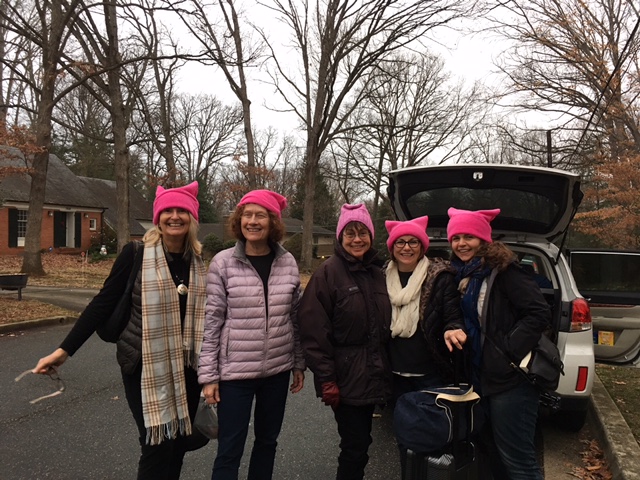 scraps a few times per times per week, it is suggested that residents have a larger bin to transfer food scraps into for weekly storage. This larger bin can also be used for transportation of the food scraps from your home to the Recycling Center. Anything that holds around 5-6 gallons and has a lid will work.
scraps a few times per times per week, it is suggested that residents have a larger bin to transfer food scraps into for weekly storage. This larger bin can also be used for transportation of the food scraps from your home to the Recycling Center. Anything that holds around 5-6 gallons and has a lid will work.
Third, bring your bin to the Food Scrap Recycling drop-off bins at the Scarsdale Recycling Center (110 Secor Road) to dispose of your food scraps as often as needed. The drop-off site is open during the Recycling Center hours of operation (Monday-Saturday 8am-3pm). There is no charge to drop off food scraps.
This service follows successful food scrap recycling programs that have been underway in the Scarsdale schools, several houses of worship and at local events for some time now. Residents are encouraged to take advantage of this great new service.
To make getting started easy, food scrap collection "Starter Kits" can be requested by residents. A starter kit includes a small countertop pail, a larger storage and transportation bin and a roll of compostable liner bags for the pail. Residents can purchase a starter kit at the Scarsdale Recycling Center Office (110 Secor Road) or request one a at ScarsdaleCompostKit.com. The kits cost $20. The starter kits are being provided by residents, this is not a Village of Scarsdale service.
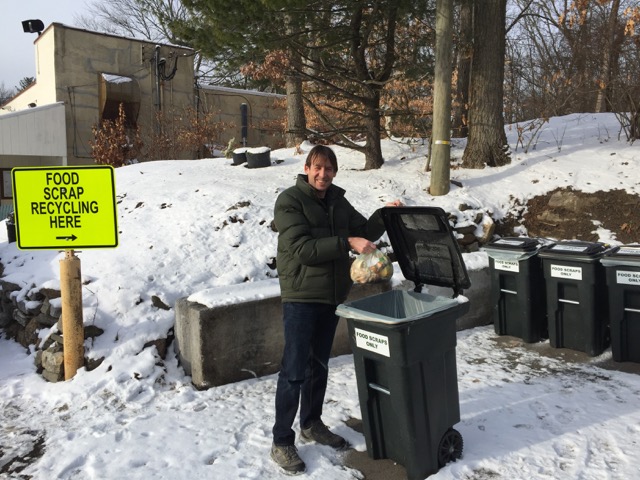 Most importantly, start bringing your food scraps to the drop-off bins at the Scarsdale Recycling and help keep food scraps out of the trash!
Most importantly, start bringing your food scraps to the drop-off bins at the Scarsdale Recycling and help keep food scraps out of the trash!
Have questions or want to learn more? Please email [email protected]. You can also go to the Food Scrap Recycling link at http://www.scarsdale.com/170/Sanitation for more information on the program including the lists of what is and isn't accepted in the food scrap drop-off bins.

A Local Pet Cemetery, a National Historic Site
- Details
- Written by Stacie M. Waldman
- Hits: 7097
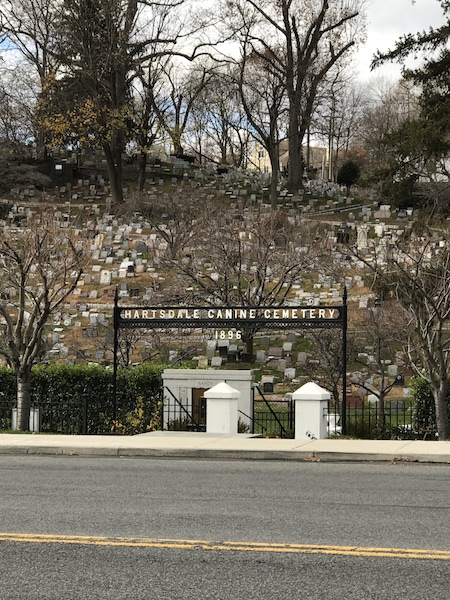
The Hartsdale Pet Cemetery, also known today as The Peaceable Kingdom, proudly displays the year 1896 on its gate, the year that the site went from apple orchard to pet cemetery. It is the oldest pet cemetery in America and is listed on the U.S. Registry of Historic Places.
Hartsdale resident and New York City veterinarian Dr. Samuel Johnson had initially been helping out a friend by allowing her to bury her dog in his apple orchard. Being historically (and currently) illegal to bury animals in public parks or human cemeteries, Dr. Johnson recognized this conundrum and subsequently set aside three acres of his orchard for pet burials. It became popular among the NYC elite who could afford to bury their pets there and the cemetery was even featured early on in an article in a 1905 edition of the New York Times.
Today, the cemetery houses over 100,000 deceased pets. It remains the oldest operating pet cemetery in the world and is on protected, deed-restricted land due to its historic status. Although cats and dogs are the most common pets people inter, any type of pet is accepted by the cemetery. In fact, even a lion cub is buried there. The story goes that Hungarian artist Princess Lwoff Parlaghy came to the U.S. in 1908 and brought with her a myriad of animals including a pet bear, alligator, ibis, two falcons, two dogs and two cats in addition to a lion cub. She lived at the Plaza Hotel where the cub died shortly thereafter. Mariah Carey's pet cat (Clarence) is buried there as well.
For the past 40 years, ownership and operating has been in the hands of the Martin Family. I had a chance to talk to Ed Martin about the process of having a pet buried at Hartsdale Pet Cemetery. Here is what he said:
First, I ask if your pet is deceased. It's better to plan 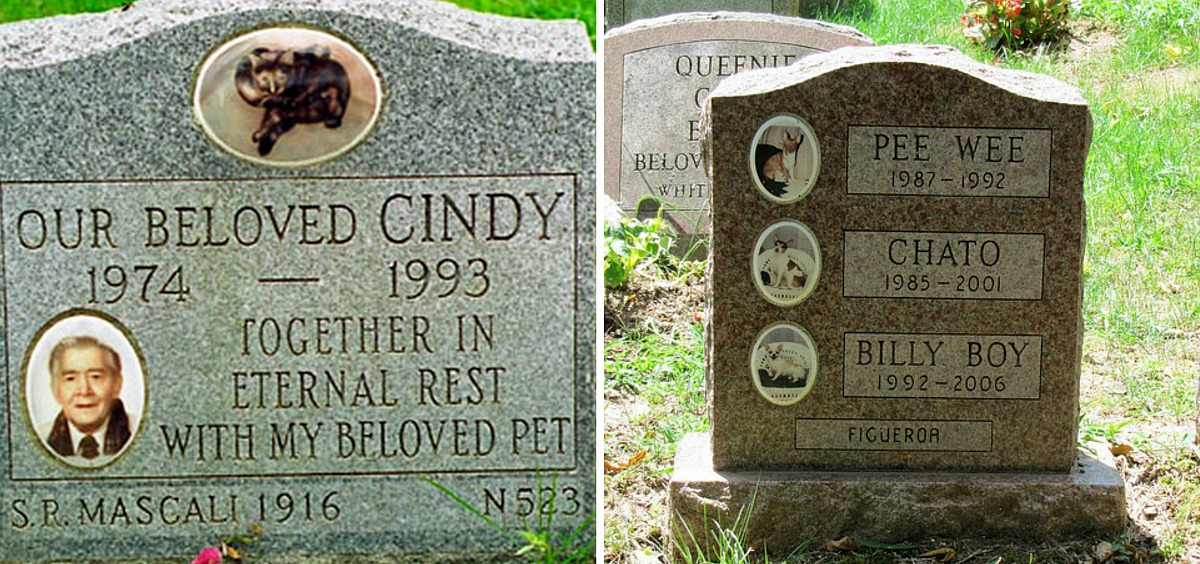 ahead but most people don't. If one did plan for the pet passing and if burial is the choice, I suggest touring the cemetery, seeing if it's the right fit and picking out a plot. Once your pet passes we offer cremation or burial. If interested in burial, I let the pet owner know that our cemetery works like a human cemetery. Once you pick out a plot and become a plot holder you have an obligation to pay the maintenance fee annually.
ahead but most people don't. If one did plan for the pet passing and if burial is the choice, I suggest touring the cemetery, seeing if it's the right fit and picking out a plot. Once your pet passes we offer cremation or burial. If interested in burial, I let the pet owner know that our cemetery works like a human cemetery. Once you pick out a plot and become a plot holder you have an obligation to pay the maintenance fee annually.
Pets are required to be buried in caskets. Monuments are optional. Many of the costs involved are dependent on options. The larger the pet, the more expensive the burial or the cremation. The size-dependent range is just under $2,000 to just over $2,000 for a pet burial. We do allow people to view their pet in the casket and witness the burial. There is no cost to this and we strongly recommend it. Cremation is a less expensive option and ranges from $250-$350. Pets can be communally cremated and cremains are not returned (but are released within the pet cemetery) or a client can opt for individual cremation. State law defines this as one pet cremated using a separate and distinct receptacle and ashes are returned to the owner. Clients are encouraged to be there when the pet is cremated to ensure that the pet being cremated is their family pet.
What makes you so committed to the Hartsdale Pet Cemetery?
Some people who come to us to bury or cremate their pets are very nervous and upset, but most people who are glad that a pet cemetery exists. Not everyone feels the same way about pets, but for people who feel that their pet is a part of their family as we do, this can be good closure for them. We treat their pets as if they were a part of their family. Our pets are always there for us; they live in our house with us; they give us unconditional love. They provide us with joy and happiness and unfortunately their lifespan tends to be shorter than a human's. We are proud of how beautiful and historic the pet cemetery is and we invite you to come visit.
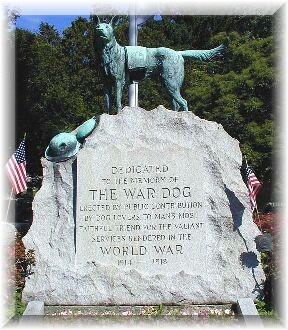 Are (live) pets allowed on the cemetery grounds?
Are (live) pets allowed on the cemetery grounds?
Yes, but we do ask people to put a leash their animals. In fact, people are encouraged to bring pets.
Does Mariah Carey visit the grave of her cat? (I had to lighten this conversation up somehow)
I have not seen Mariah Carey here but it doesn't mean she doesn't visit. I just spend a lot of my time in my office doing administrative work.
Do you have any advice for how parents can talk to kids about the death of a pet?
I'm not a psychologis;t all children are different but I have had my own personal experiences of having pets die so I share that with them if asked. I brought my kids to the cemetery with us, asked if they wanted to view their pet in the casket and I strongly encouraged them to do this. For my kids, it was a good thing for them to see that. It's an individual decision. Most kids love their pets so a pet passing is a true and often difficult loss for them.
Is there anything else about the Hartsdale Pet Cemetery you'd like to share?
We have wonderful special events at the pet cemetery. For example, we have an adoption day for pets. It's been very successful and hundreds of pets have been adopted thanks to some very dedicated volunteers.
We also have a blessing of the animals in the fall. People come with their pets and a clergy person blesses them and then the animals that have been lost.
We also have a tree lighting in the fall and we collect items for animal shelters.
In the springtime, we have a war dog memorial ceremony. The war dog memorial was erected in 1923 in honor of WW1 service dogs who saved scores of servicemen. We have since extended this to honor to dogs that are of other kinds of service to humans such as therapy dogs and guide dogs. In June, we honor all of these dogs and place a wreath on the symbolic grave of the war dog.
Hartsdale Pet Cemetery
75 N. Central Avenue
Hartsdale, NY 10530
914-428-6553
www.petcem.com
Swim Team Swims Breast Stroke for Breast Cancer Research
- Details
- Written by Joanne Wallenstein
- Hits: 5146
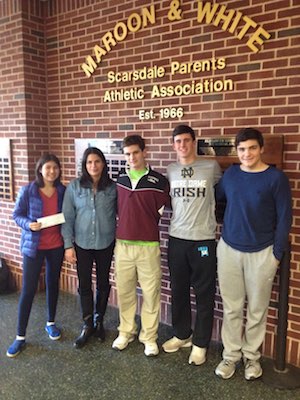 The SHS swim team raised almost $10,000 at its second annual "Swim Breaststroke for Breast Cancer" event on November 19th. The swimmers collected pledges from the community ranging from .25 cents to $25 a lap. This year's event was held at Westchester Community College pool and included over 30 swimmers from the boys and girls swim team's who donated almost $ 10,000 to The American Cancer Society.
The SHS swim team raised almost $10,000 at its second annual "Swim Breaststroke for Breast Cancer" event on November 19th. The swimmers collected pledges from the community ranging from .25 cents to $25 a lap. This year's event was held at Westchester Community College pool and included over 30 swimmers from the boys and girls swim team's who donated almost $ 10,000 to The American Cancer Society.














